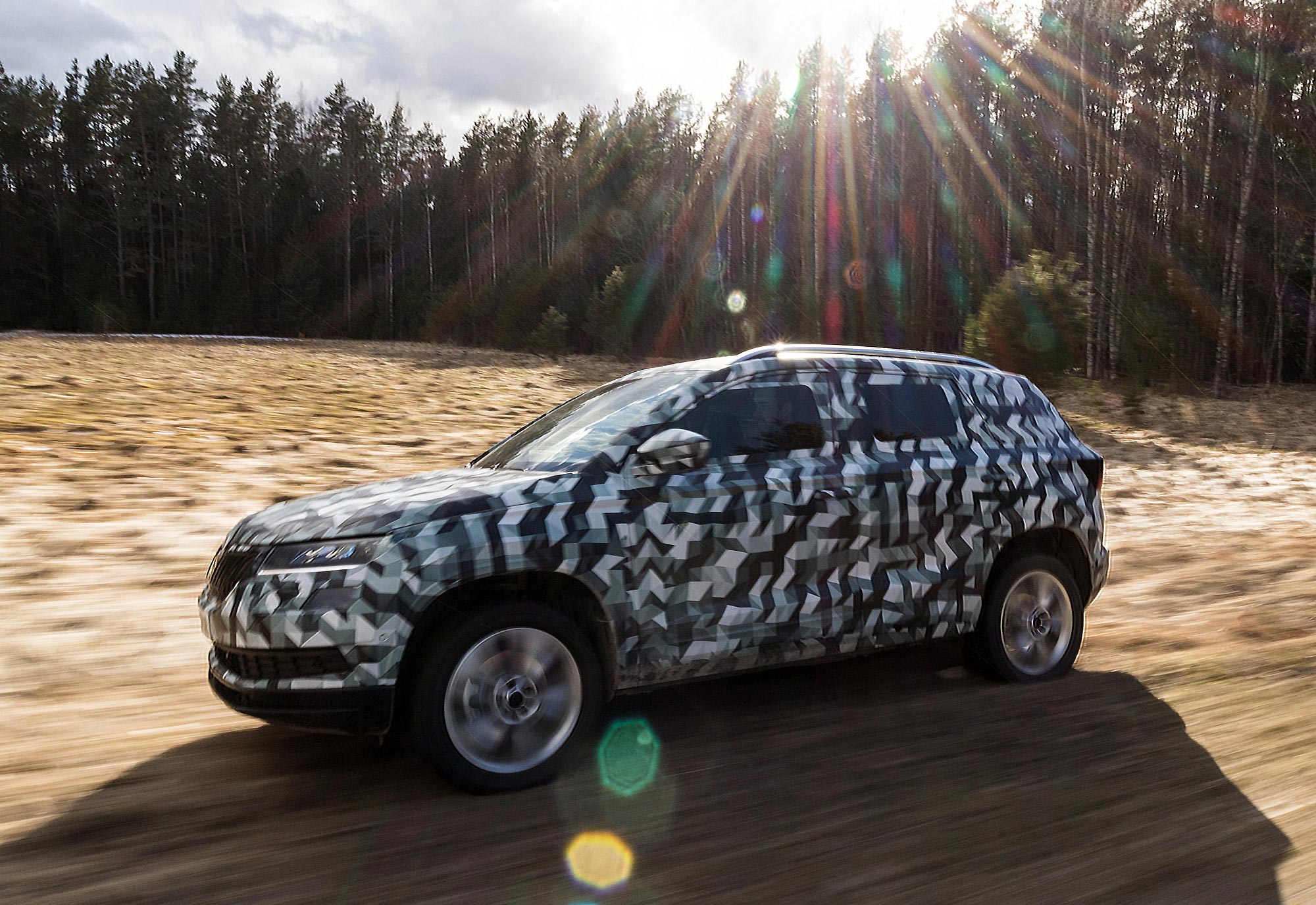
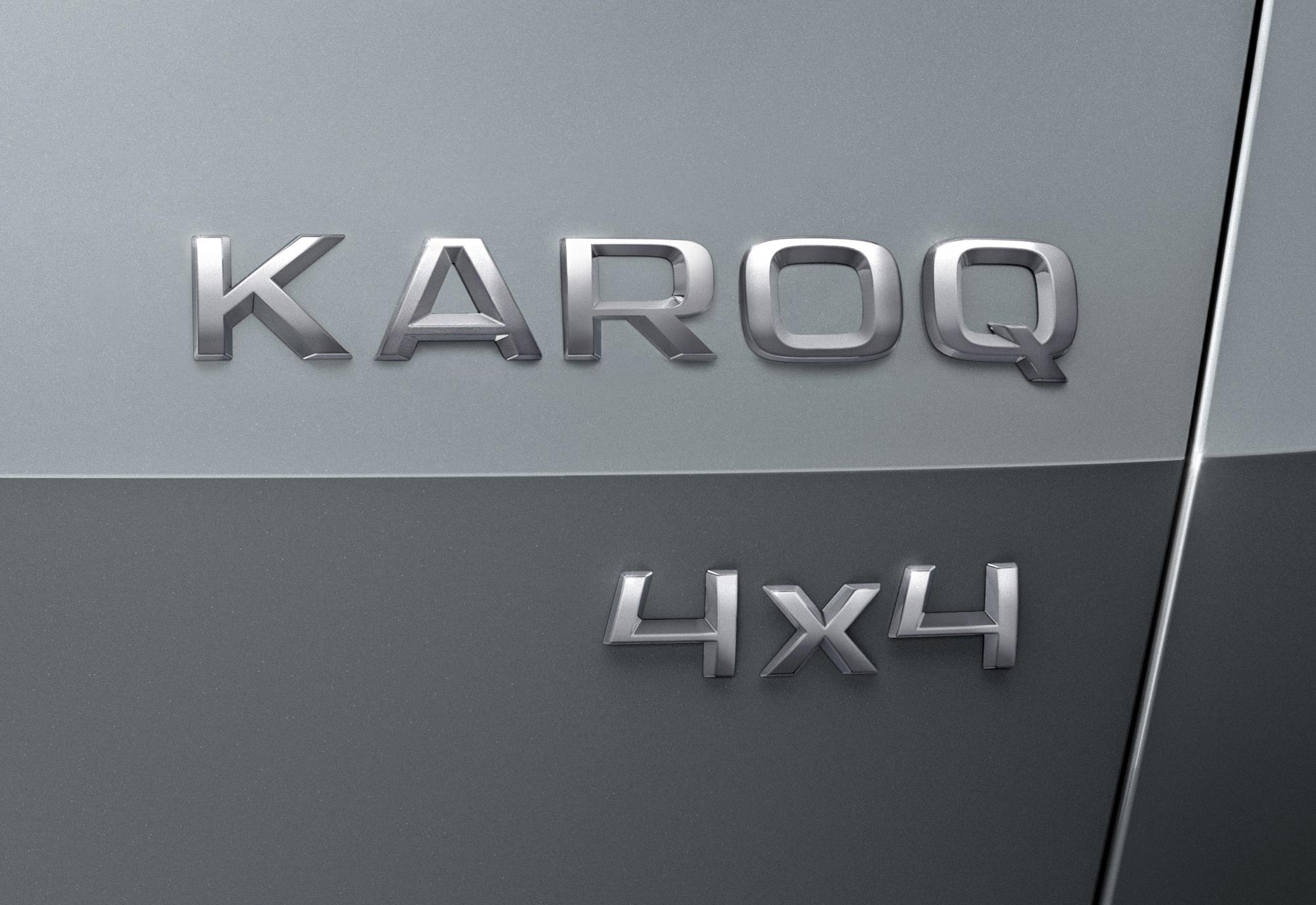
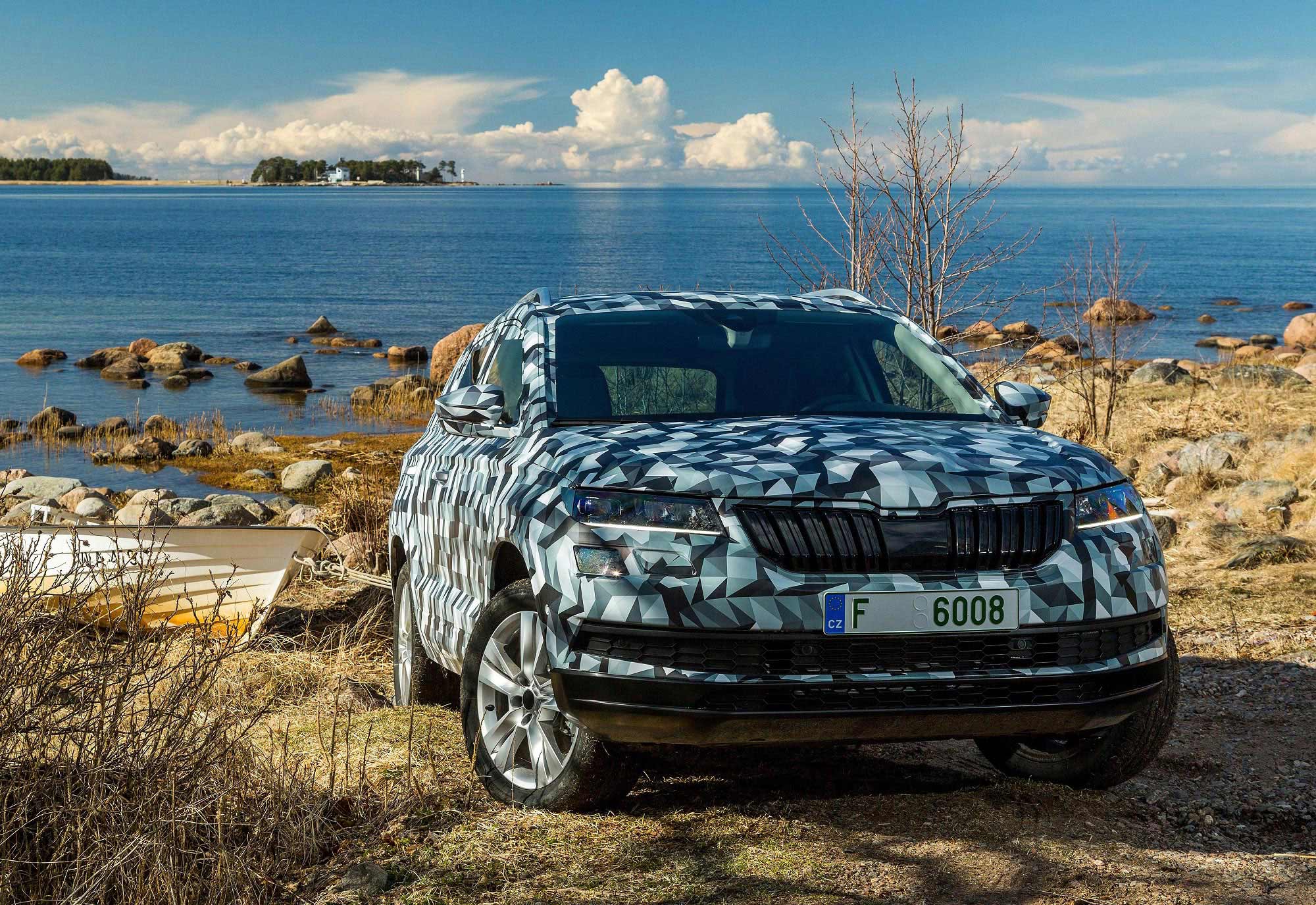
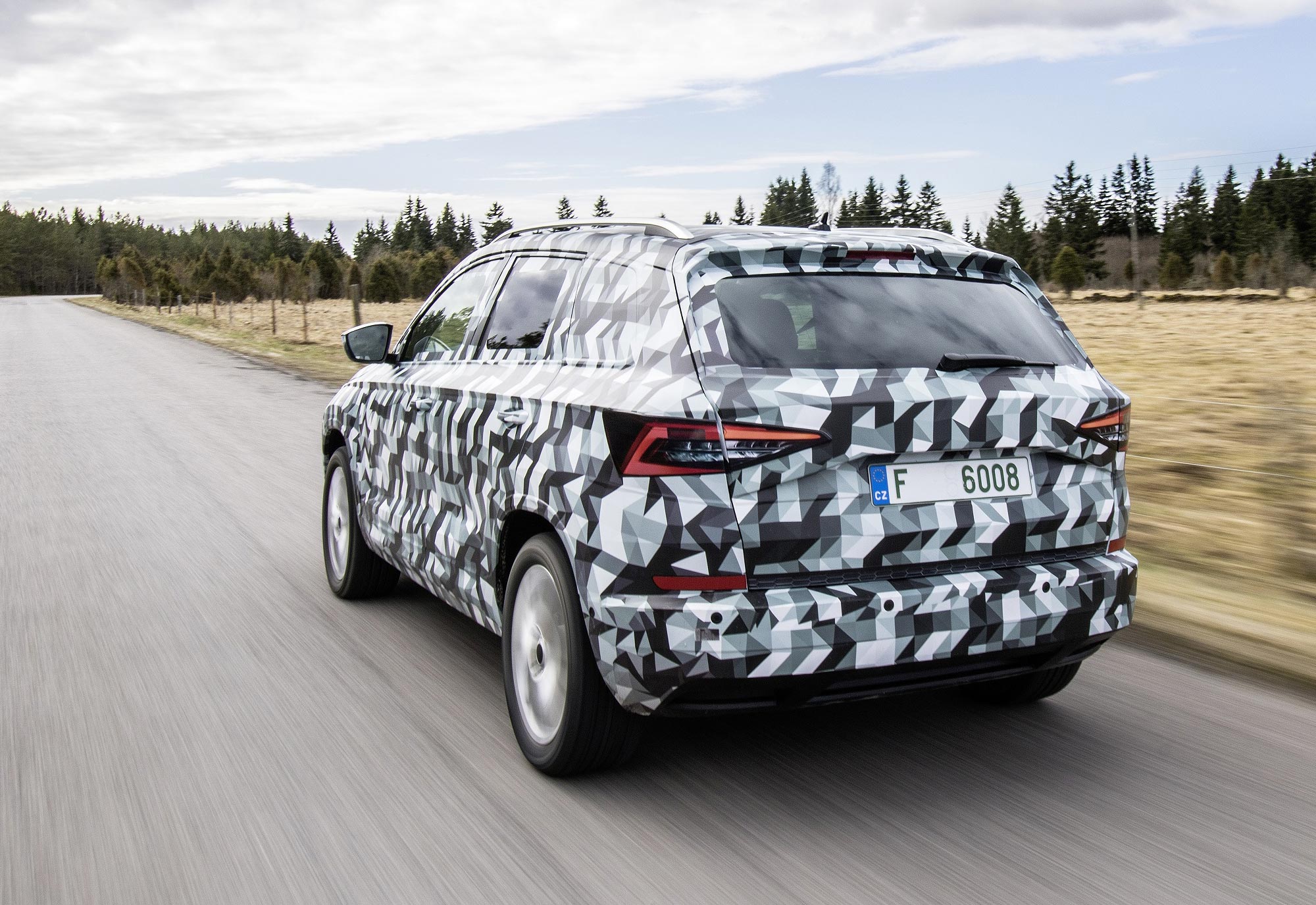
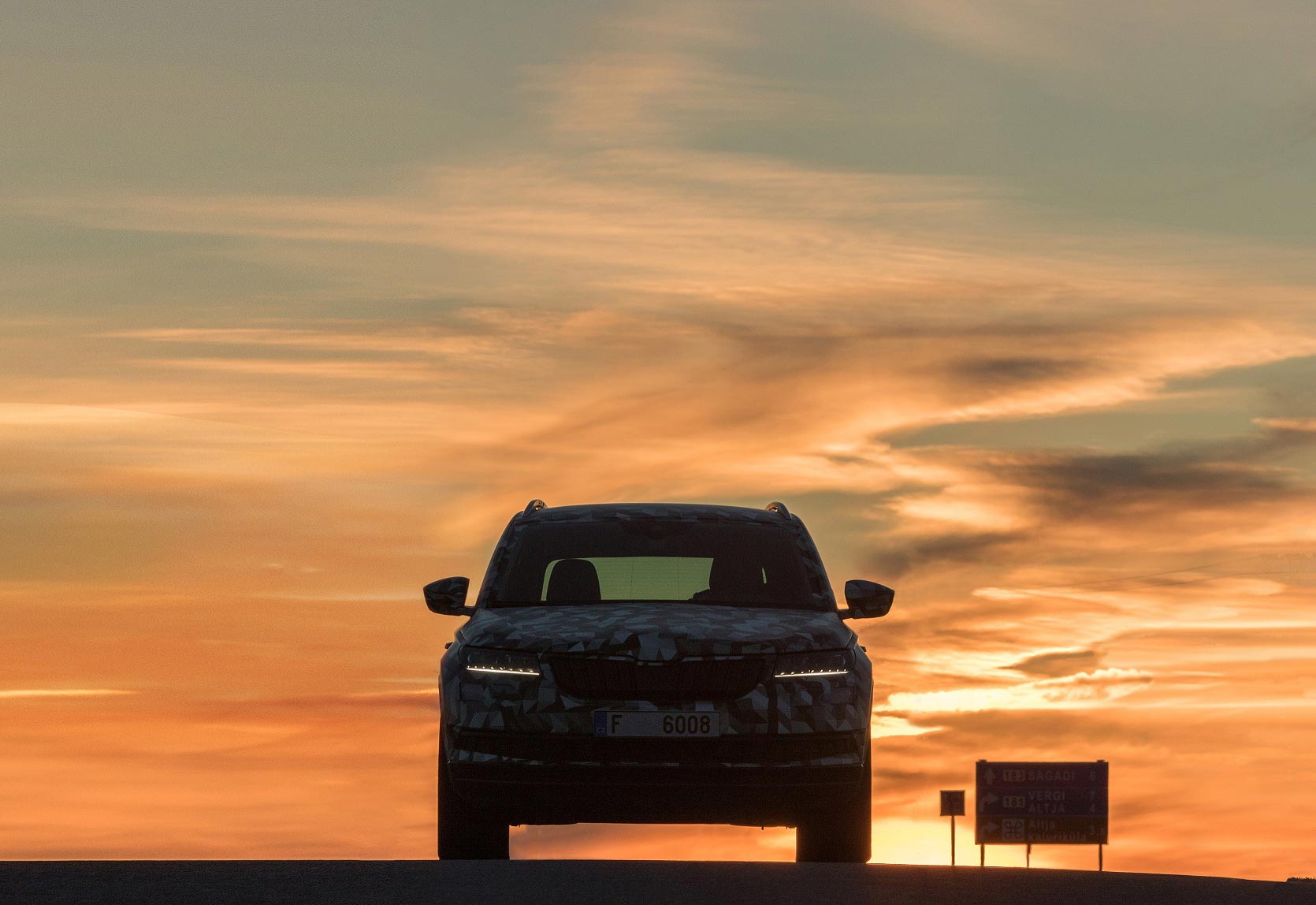
The Karoq shares its underpinnings with the SEAT Ateca and the forthcoming Volkswagen T-Roc, claiming exceptional interior space in its larger, sleeker bodyshell.
As with the Kodiaq, the new car’s name has drawn inspiration from the Alutiiq tribe from Kodiak Island, off the southern coast of Alaska, where the word for ‘car’ is ‘KAA’RAQ’ and ‘arrow’ (a central element of the Škoda logo) is ‘RUQ’. Skoda says the alignment between the Kodiaq and Karoq names has created a consistent nomenclature for the brand’s current and future SUV models.
The new compact SUV is 4,382 mm long, 1,841 mm wide, and 1,605 mm high with a wheelbase of 2,638 millimetres (all-wheel drive version: 2,630 mm).
The increase in size benefits passenger legroom as well as the boot, which has a capacity of 521 litres, expanding to 1,630 litres with the rear seats folded. Buyers specifying the optional VarioFlex rear seat can turn the SUV into a something of a van with a maximum loading capacity of 1,810 litres.
Connectivity has been boosted with ‘state-of-the-art’ interfaces equipped with capacitive touch displays. The top systems Columbus and Amundsen have a WLAN hotspot, with an optional LTE 4G module is available for the Columbus system. The Internet connection is based on the current fastest mobile radio standard, enabling passengers to surf and access email freely with their phones and tablets.
The SmartLink+ platform, compatible with Apple CarPlay, Android Auto and MirrorLink, is available as an option for the basic Swing infotainment system, but comes as standard with higher infotainment systems. The phone box with inductive charging couples the smartphone to the roof antenna and simultaneously charges it wirelessly.
Driver assistance safety systems include the parking assistant, Lane Assist and traffic-jam assistant as well as Blind Spot Detect, Front Assist with predictive pedestrian protection and Emergency Assistant. The Škoda Karoq can tow trailers of up to two tonnes and a new trailer assistant helps with low-speed reversing manoeuvres.
Five engine variants – two petrol and three diesel engines – are on offer. The two petrol engines and two diesels are new in the line-up with displacements of 1.0-, 1.5-, 1.6- and 2.0-litres; the power range is from 115- to 190 hp. All drivetrains are turbo-charged direct injection units with start-stop technology and brake energy recovery, compliant with EU 6 regulations.
With the exception of the most powerful diesel, all can be specified with a 6-speed manual gearbox or 7-speed DSG. The 2.0 TDI with 190 hp comes as standard with 4×4 drive and 7-speed DSG while the 1.5 TSI features cylinder deactivation.
Škoda’s Strategy 2025 will see the brand continually expanding its model range over the coming years with the primary focus on SUVs. The new Karoq will make its world premiere on 18 May in Stockholm with a market launch set for the second half of 2017.
